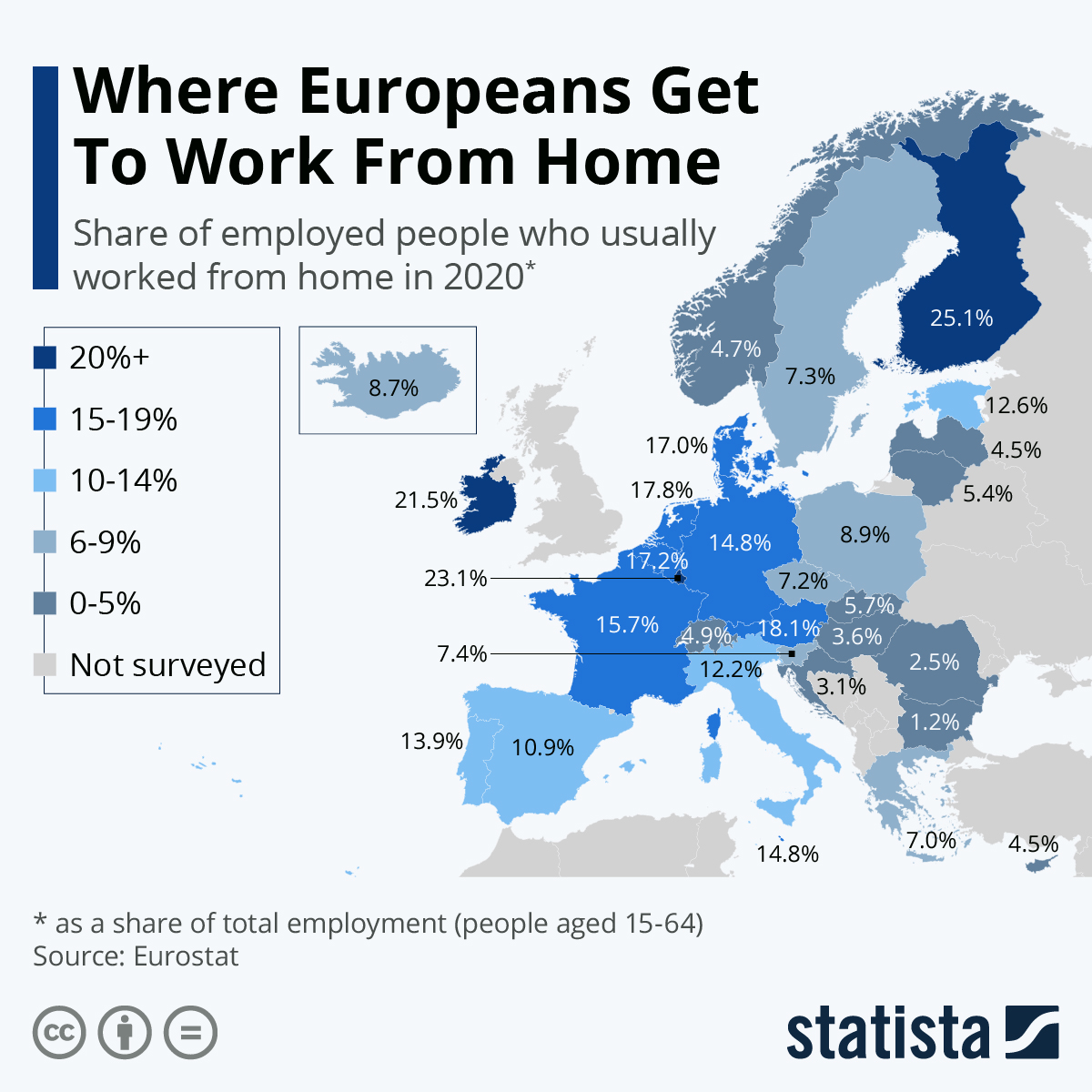In the European Union, 22 percent of employed people ages 15 to 64 worked from home in 2023, according to new data by Eurostat. This consisted of nine percent who said they usually worked from home and 13 percent who said they worked from home only occasionally. The share of employees working from home has increased by eight percentage points since 2019, i.e. before the Covid-19 pandemic and the widespread adoption of teleworking.
The Netherlands had the highest share of people who worked from home at least occasionally in 2023 at 51.9 percent. It was followed by the Nordic countries of Sweden (45.3 percent), Iceland (42.6 percent), Norway and Finland (around 42 percent). Just under a quarter of workers in Germany said the same (23.4 percent) and less than 15 percent of workers in Italy and Spain. Countries in Eastern Europe had the lowest share of workers teleworking. In Romania and Bulgaria, only around three percent of the working population said they did it in 2023.
Factors that influence the prevalence of working from home within a population include the degree of tertiarization and digitalization of the economy, which in turn affects the share of jobs that can be carried out by teleworking.





















